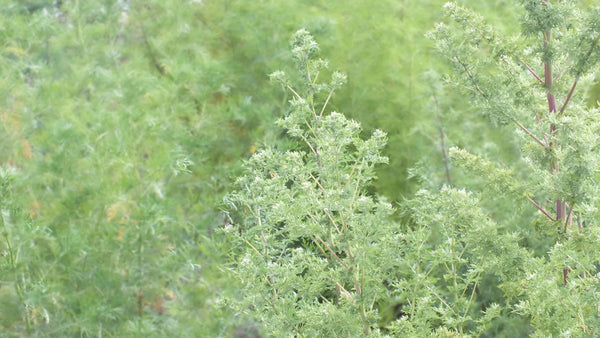Artemsia annua – the whole story
Welcome to Healing Garden Tenerife's blog! Today you will learn about Artemisia annua, also known as sweet wormwood or sweat annie. You will get to know the full story of this extraordinary plant. I expect that after reading this post all your questions on what Artemisia annua is, what it is good for and how it can be used will be clear to you.
If not, don't hesitate to post your question in a comment and I will answer it right away. Also, if you follow this blog for a while you will learn more and more about this plant as well as many other special plants that exist in this world. For certain reasons these plants are still far too little known by most people.
The family of Artemisia is very big. Globally there exist a few hundred of different types of Artemisia, some of which are used for cooking, other are being used in oriental medicine and some do even have hallucinogenic effects – ask Van Gogh. All these different types of Artemisia are NOT Artemisia annua.
Artemisia annua is one very particular species of Artemisia. It is an annual plant which means that after producing seeds, it dies. Thus the latin second name ‹annua›. Artemisia annua or oriental wormwood grows naturally in China. Artemisia annua has been used in traditional chinese medicine for centuries, among other illnesses, against fever and malaria.
However, it was only in 1968, during the war in Vietnam that chinese dictator Mao Tse Dong commanded a team of five hundred scientist to «urgently find a quick working medicine to treat malaria that has no side-effects and to which there is no resistance.» Tu Youyou, a woman, discovered Artemisia annua which until then had mainly been used to treat hemorrhoids.

One of the main reasons why the asians won the vietnam war was the facts that they were able to cure malaria using Artemisia annua. Until today Malaria prevails being one of the deadliest diseases on the planet. While you are reading this blog post more than three persons have died from malaria, every single minute. The Bill-Gates-Foundation has already spent several billions of dollars investigating the possibilities of eradicating malaria with Artemisia annua based drugs.
And this is where the whole problem starts. Whereas small NGOs efficiently started planting Artemisia annua all over the tropics, using the raw leafs, the WHO promotes the use of Artemisiniin based drugs. Since Artemisiniin was first isolated from Artemisia annua in 1972 big pharmaceutical companies became interested in patenting and promoting their medicine while fighting and criminalizing non profit organizations around the globe, backed by corrupt governments and organizations such as the WHO.
The even bigger problem is that during the last years more and more cases of Artemisiniin resistance are being reported. The medicines stop being useful in the same way antibiotics are becoming increasingly useless. Why do they become ineffective? Nature is intelligent, believe it or not. The isolation of single substances from a whole plant makes viruses start to adapt themselves to these substances.
Still, the WHO persists on its recommendation to use the drugs instead of the tea, which is more than ten times cheaper to produce locally. The WHO even claims that using the tea creates the increasingly observed Artemisiniin resistance.
Only one question: Who is financing the WHO? The same pharmaceutical companies that prefer to sell their increasingly inefficient drugs to people who can simply not afford them. Seventy five percent of the WHO's annual budget comes from private, multinational pharma businesses.
However, the even more astonishing part of the story is still to come. In 1996 Dr. Lai and Dr. Singh from Washington DC patented an alternative treatment of cancer based on Artesunates, substances which are once again being isolated from Artemisia annua. Answering the question why these medicines were never produced, Dr. Singh states that «the pharmaceutical industry was not interested in conducting clinical studies because Artesunates are simply to cheap.»
For sure this is only the beginning of the story of Artemisia annua. However I must apologize that I will stop writing now as I have been harvesting Artemisia the whole day and I still have to organize the harvest for next week. If you have any particular question, just shoot. Or just check out Artemisia annua Extract in my Healing Garden Shop. Have a nice day!

2 comments
Hi, Loved your video on Artemisia annua. I would like to buy some seed. Do you sell it? I heard it also helps with ulcerative colitis!
Many Thanks Mark
I and my Zambian friends in Eastern Province have been using your Artemesia extract very successfully when the first symptoms of Malaria appear. They are very familiar with such symptoms as they get Malaria at least once every year. My question is, will you post directly to Zambia please?